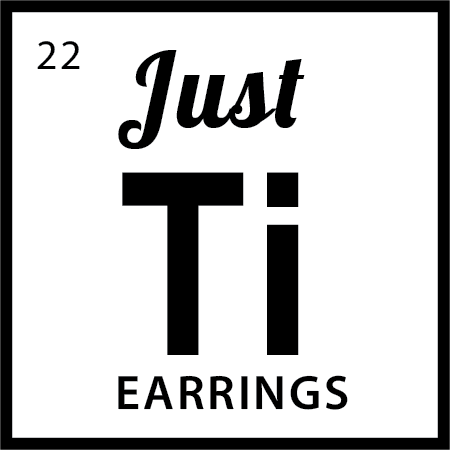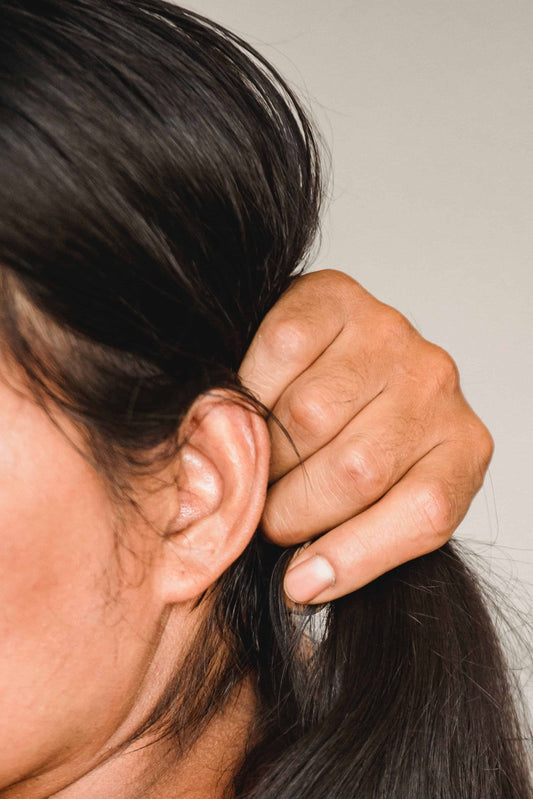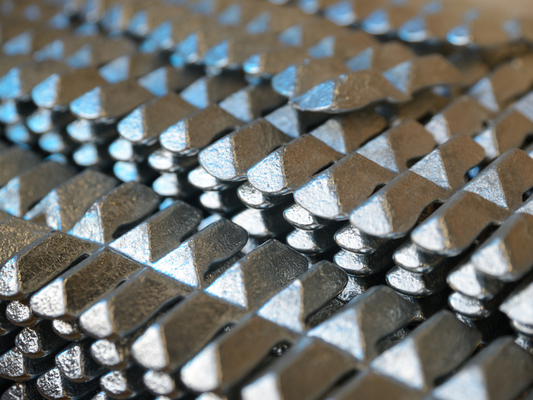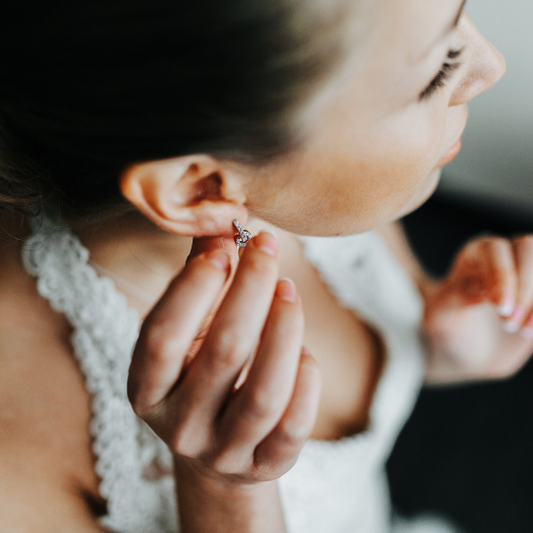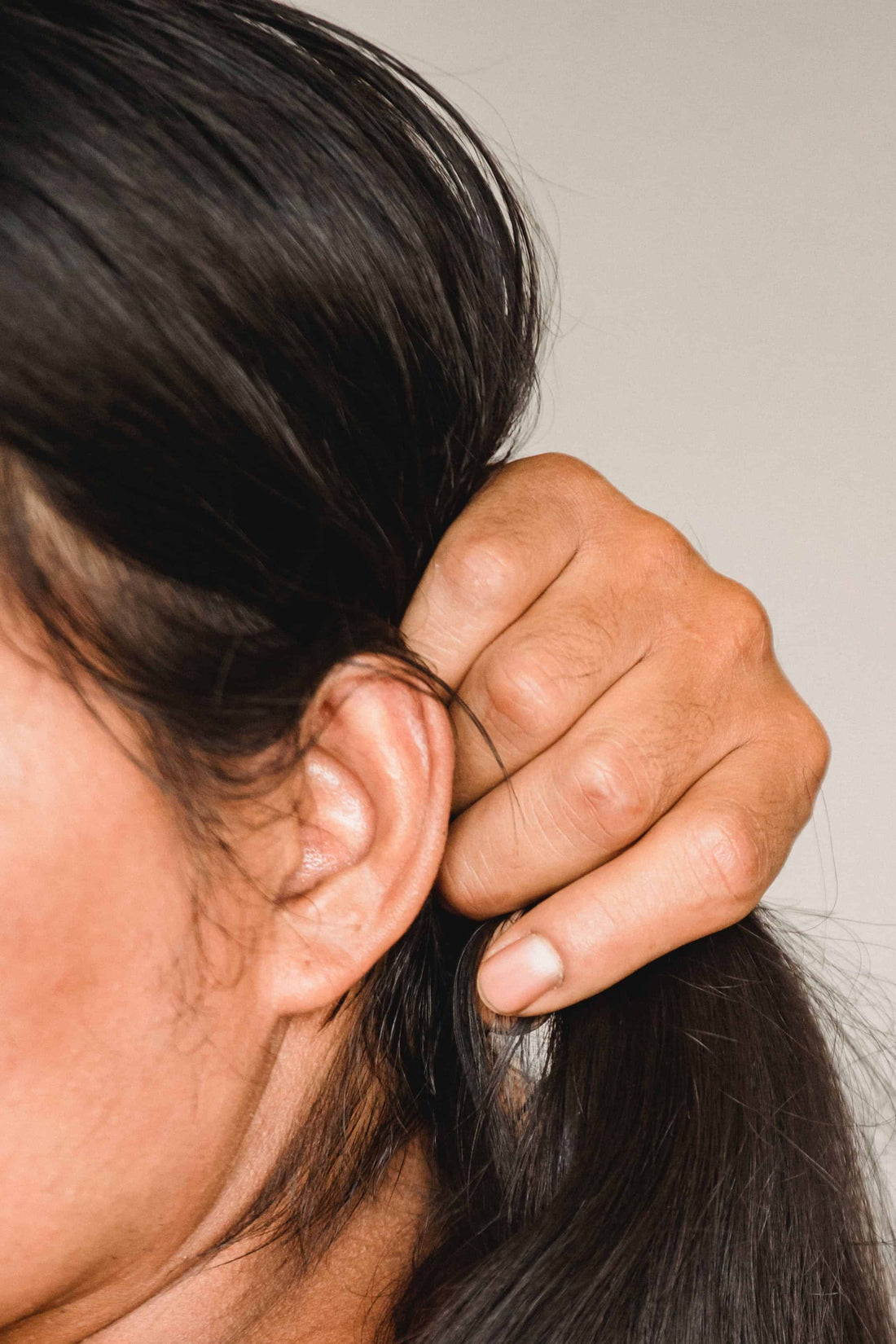
Comment savoir si mes boucles d'oreilles sont sans nickel
Share
Une allergie au nickel est un type de dermatite de contact, qui est une affection cutanée inflammatoire. Les personnes allergiques au nickel développent une réponse du système immunitaire lorsque le nickel entre en contact avec la peau, un métal que l'on trouve couramment dans les bijoux, notamment les boucles d'oreilles. La réaction allergique se produit parce que le corps identifie à tort le nickel comme étant nocif.
Ce que vous pourriez voir:
-
Rougeur et éruption cutanée : Le symptôme le plus courant est une rougeur et une éruption cutanée sur la peau à l'endroit où les boucles d'oreilles entrent en contact. Cette éruption cutanée peut provoquer des démangeaisons et peut se développer dans les 12 à 48 heures suivant l'exposition.
-
Gonflement : la zone affectée peut enfler, devenant plus prononcée autour du site de contact avec des boucles d'oreilles contenant du nickel.
-
ampoules et bosses : dans certains cas, de petites ampoules ou bosses remplies de liquide (vésicules ou papules) peuvent apparaître sur la peau. Ceux-ci peuvent être inconfortables et provoquer une irritation supplémentaire.
-
Douleur et inconfort : La peau peut être sensible et les personnes allergiques au nickel peuvent ressentir de la douleur ou de l'inconfort autour des boucles d'oreilles.
Il est important de noter que les allergies au nickel sont courantes et que même de petites quantités de nickel peuvent déclencher une réaction chez les personnes sensibles. Si vous soupçonnez une allergie au nickel, il est conseillé d'éviter les bijoux contenant du nickel, y compris les boucles d'oreilles. Si les symptômes persistent ou s'aggravent, il est essentiel de consulter un médecin pour un diagnostic et une prise en charge appropriés.

Comment savoir si mes boucles d'oreilles sont sans nickel
-
Vérifiez l'étiquette ou la description du produit :
- Si vous avez acheté les boucles d'oreilles auprès d'une source fiable, vérifiez l'étiquette ou la description du produit pour obtenir des informations sur le matériau. De nombreux bijoux indiqueront explicitement s'ils sont sans nickel, hypoallergéniques ou fabriqués à partir de matériaux connus pour être sans danger pour les personnes allergiques au nickel. Gardez également à l’esprit que tous les bijoux ne sont pas commercialisés/étiquetés avec précision.
-
Demandez au vendeur ou au fabricant :
- Si vous n'êtes pas sûr du matériel ou si les informations ne sont pas facilement disponibles, contactez le vendeur ou le fabricant. Ils devraient être en mesure de fournir des détails sur la composition des boucles d'oreilles et de savoir si elles conviennent aux personnes allergiques au nickel.
-
Effectuer un test de patch :
- Si vous avez une allergie connue au nickel ou si vous n'êtes pas sûr de la composition des boucles d'oreilles, pensez à faire un test cutané. Placez une petite quantité de matériau pour boucles d'oreilles sur une petite zone de votre peau et observez tout signe d'irritation ou de réaction allergique sur une période de 24 à 48 heures.
-
Utilisez un kit de test au nickel :
- Des kits de test du nickel sont disponibles pour vous aider à déterminer si un article contient du nickel. Ces kits impliquent souvent d’appliquer une solution de test sur les boucles d’oreilles et d’observer la réaction. Cependant, ces tests ne sont peut-être pas infaillibles et c'est toujours une bonne idée de confirmer auprès du vendeur ou du fabricant.
Les boucles d'oreilles sans nickel deviennent-elles vertes
Les boucles d'oreilles sans nickel sont moins susceptibles de provoquer une décoloration de la peau que les boucles d'oreilles contenant du nickel. Cependant, il est essentiel de comprendre que la décoloration verte souvent associée aux bijoux n'est pas directement causée par le nickel lui-même mais plutôt par la réaction entre les métaux contenus dans les bijoux et la peau de celui qui les porte.
Voici quelques facteurs qui peuvent contribuer à ce que les boucles d’oreilles deviennent vertes, même si elles sont sans nickel :
-
Métaux communs : certains bijoux, y compris ceux étiquetés comme sans nickel, peuvent être fabriqués à partir de métaux communs ou d'alliages contenant d'autres métaux comme le cuivre ou le laiton. Lorsque ces métaux réagissent avec les acides de la peau et l’humidité, ils peuvent s’oxyder, rendant la peau verte.
-
PH et humidité de la peau : le niveau de pH de la peau d'un individu et la présence d'humidité peuvent influencer le risque de décoloration de la peau. Les personnes ayant une peau plus acide peuvent avoir une plus grande probabilité que leurs bijoux provoquent une décoloration de la peau.
-
Facteurs environnementaux : L'exposition à certains facteurs environnementaux, tels que l'humidité et la présence de substances comme des lotions ou des parfums, peut contribuer à l'oxydation des métaux et avoir un impact sur l'apparence. des bijoux et de la peau.

L'acier inoxydable est-il sans nickel ? C'est de l'or ?
L'acier inoxydable peut contenir du nickel, mais il est généralement considéré comme une option sans nickel pour la plupart des personnes sensibles au nickel. Cela signifie que l'acier inoxydable et même ce qu'on appelle l'acier chirurgical ne sont pas complètement hypoallergéniques et certains utilisateurs auront quand même une réaction.
L'acier inoxydable est un alliage composé principalement de fer, le chrome étant l'élément d'alliage essentiel qui offre une résistance à la corrosion. Bien que la plupart de l’acier inoxydable contienne du nickel, celui-ci est souvent présent en petites quantités et le type d’acier inoxydable utilisé peut varier.
Voici les types courants d’acier inoxydable et leur teneur en nickel :
-
Acier inoxydable série 300 : Cette série, comprenant les types comme 304 et 316, est couramment utilisée pour les bijoux. Il contient du nickel, mais la teneur en nickel est généralement faible. De nombreuses personnes allergiques au nickel découvrent qu’elles peuvent porter des bijoux en acier inoxydable de la série 300 sans subir de réactions indésirables.
-
Acier inoxydable série 400 : Cette série, telle que le type 440 ou « acier inoxydable chirurgical », est moins couramment utilisée pour les bijoux mais est utilisée dans certains cas. Il peut contenir des niveaux inférieurs de nickel, mais il n'existe aucune certification reconnue au niveau fédéral pour être qualifiée d'« acier inoxydable chirurgical ». Cela signifie qu'il est difficile de déterminer les quantités de nickel.
L'or pur (or 24 carats) est généralement sans nickel. L'or dans sa forme la plus pure est un métal très doux et malléable, et il ne contient pas de nickel. Cependant, en bijouterie, l'or pur est souvent allié à d'autres métaux pour améliorer sa durabilité et sa dureté.
Le choix des métaux d’alliage peut varier et la plupart des alliages d’or contiennent du nickel. Il est essentiel de connaître le carat de l'or pour déterminer sa pureté et sa teneur potentielle en nickel. Les alliages d’or courants comprennent :
-
Or 18 carats (18 carats) : Cet alliage d'or contient 75 % d'or et 25 % d'autres métaux. Les « autres métaux » peuvent inclure le cuivre, l’argent et parfois le nickel.
-
Or 14 carats (14K) : Cet alliage d'or contient 58,3 % d'or et 41,7 % d'autres métaux. Là encore, les métaux supplémentaires peuvent inclure du nickel dans certains cas.
-
Or 10 carats (10K) : Cet alliage d'or contient 41,7 % d'or et 58,3 % d'autres métaux. À cette pureté, les autres métaux comprennent très probablement du nickel.
Tous les boucles d'oreilles contiennent-elles du nickel ?
Heureusement, non. Il existe une offre croissante de boucles d'oreilles élégantes et abordables fabriquées à partir de matériaux contenant du zéro nickel. Que vous souhaitiez des clous simples ou des boucles d'oreilles pendantes flashy, ou même que vous souhaitiez porter les deux en utilisant notre base TI-GO, les boucles d'oreilles Just-Ti sont fabriquées en titane et contiennent zéro nickel. Des centaines de nos clients mettent régulièrement à jour leurs collections avec la certitude qu'ils peuvent porter de superbes boucles d'oreilles et être sans nickel.
